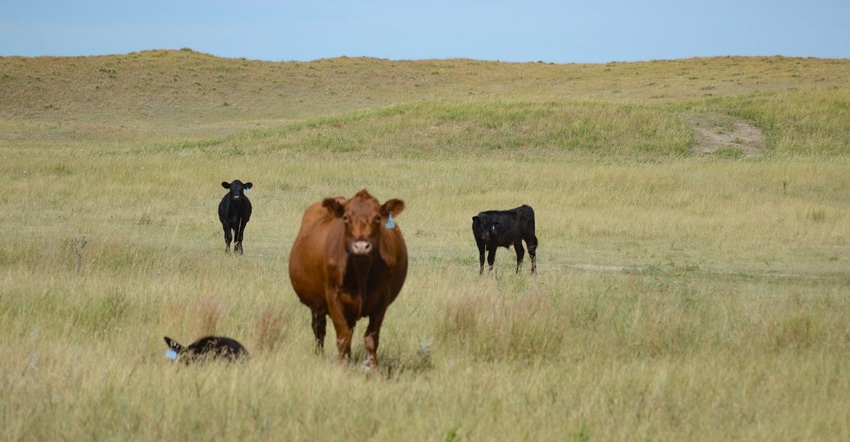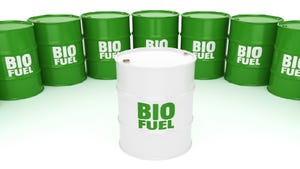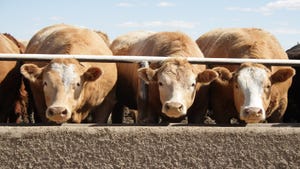July 7, 2020

Hot, dry conditions in early summer have taken a toll on grass growth in much of the Great Plains this year. There are several options cattle producers may want to consider to conserve grass in these dry areas.
Every producer should have a drought plan that includes trigger dates and a culling strategy, but once those top cuts are made, what feeding options are there for the core herd?
Can I supplement the cows on pasture and save grass that way?
Yes and no. Providing a protein supplement such as range cubes or distillers grains certainly will help the cows maintain body condition, but supplying a protein supplement will actually allow the cows to digest low-quality forage better and, therefore, increase forage consumption, which is the exact opposite of the goal.
However, research has shown that mixing wet distillers and poor-quality forage or crop residues can replace some grass consumption, but it likely will not result in a pound-for-pound intake replacement of grass.
Most ethanol plants are back to operating at full or near-full capacity, so wet distillers grains may be readily available for some producers. For more information on forage replacement on pasture, see NebGuide 2099, Crop Residues or Low Quality Hay Combined with Byproducts as a Forage Substitute.
What are my options for feeding in confinement?
If a producer has February- or March-born calves, early weaning may be an option. This allows the producer to put the calves on a high-quality diet, so that the desired rate of gain is maintained, and the now dry cows will have a much lower energy requirement with the cessation of lactation, making them very easy to maintain on a limit-fed diet in confinement. NebGuide G2047, Management of Early Weaned Calves, may be helpful if calves are weaned early.
If a producer has April- or May-born calves, or simply prefers not to wean early, pairs can be maintained in confinement, but several management issues need to be considered. Cow-calf pairs can be confined on pivot corners or fallow ground or a winter feed ground, if desired.
Calves will need to have access to feed as well, so supplying 2 feet of feeding space for the cows and 1 foot for the calves is important. Cows can be limit-fed an energy dense diet mixed with poor-quality forages, but the diet needs to meet the demands of lactation. Producers can visit with their Extension personnel to develop a diet to meet the cow’s requirements.
Unfortunately, poor-quality residues are more difficult to digest for the young calf, so producers may want to consider a creep area for the calves where they are allowed to graze or are fed a diet higher in digestibility that is off limits to the cows.
All calves need access to a water source, which is important for hydration and rumen development, even if the calf is nursing. Calves born in confinement in July and August also may benefit from a source of shade.
For more information on managing production cows in confinement, see NebGuide 2237, Management Considerations for Beef Cows in Confinement.
Concerned about breeding season for late-spring calving cows?
Research has shown that cows breed back best on an increasing plane of nutrition. Therefore, if hot, dry conditions produce grass that is mature a month ahead of schedule and grass availability is limited, then cows grazing in July and August could be experiencing a declining plane of nutrition, which could be detrimental to conception rates. Supplemental feed could be warranted, especially for young cows nursing their first calf.
Very few cattle management decisions are easy. Culling decisions often can be clouded with emotion during difficult times. It is very important to evaluate the cost of feeding the cows as opposed to culling the cows to make the best long-term management decision.
Wilke is a Nebraska Extension cow-calf systems and stocker management specialist.
Source: UNL BeefWatch, which is solely responsible for the information provided and is wholly owned by the source. Informa Business Media and all its subsidiaries are not responsible for any of the content contained in this information asset.
You May Also Like




